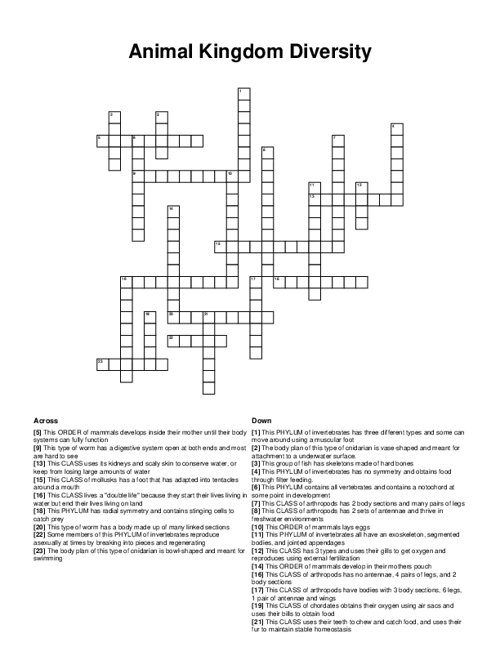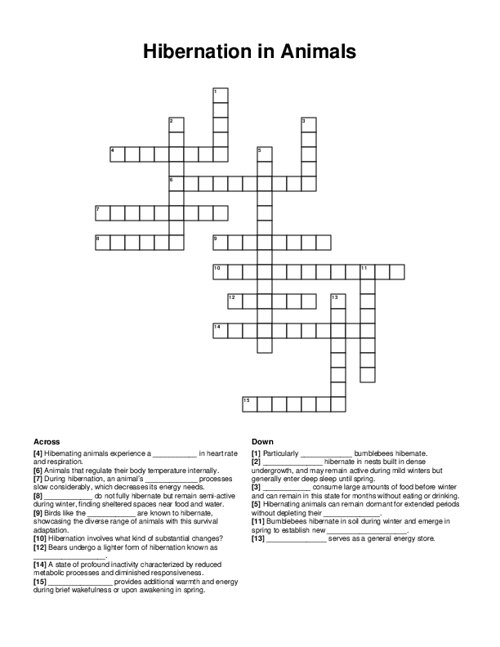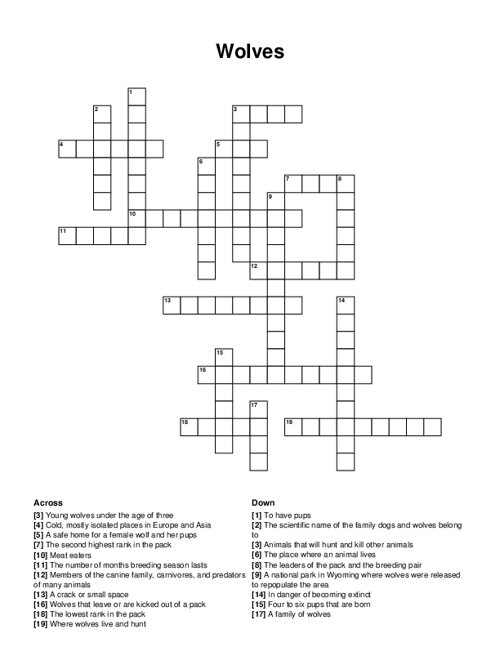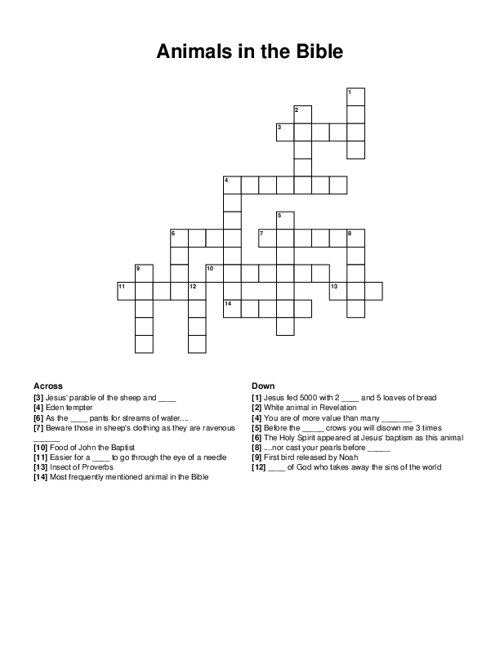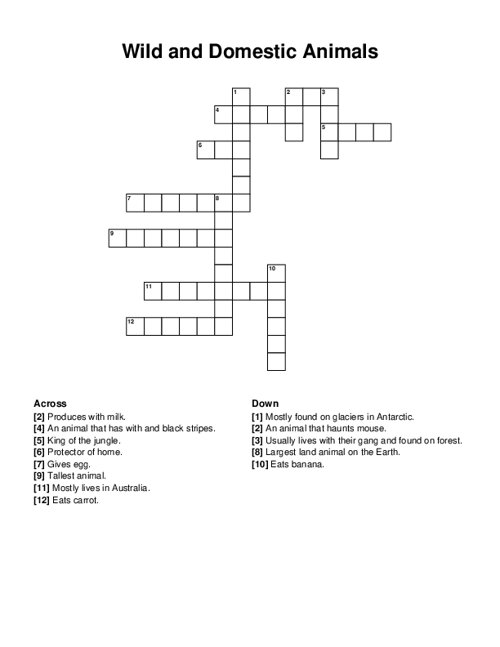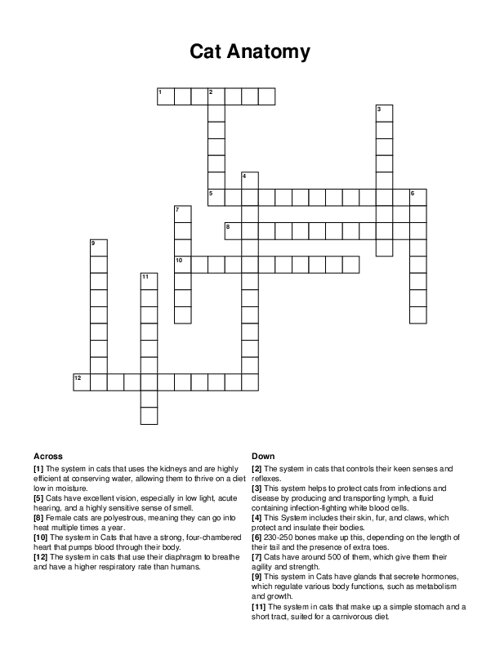Animal Kingdom Diversity Crossword Puzzle
Download and print this Animal Kingdom Diversity crossword puzzle.
Related puzzles:
QUESTIONS LIST:
- medusa : the body plan of this type of cnidarian is bowl-shaped and meant for swimming
- insects : this class of arthropods have bodies with 3 body sections, 6 legs, 1 pair of antennae and wings
- arachnids : this class of arthropods has no antennae, 4 pairs of legs, and 2 body sections
- reptiles : this class uses its kidneys and scaly skin to conserve water, or keep from losing large amounts of water
- birds : this class of chordates obtains their oxygen using air sacs and uses their bills to obtain food
- mammals : this class uses their teeth to chew and catch food, and uses their fur to maintain stable homeostasis
- centipedes : this class of arthropods has 2 body sections and many pairs of legs
- fish : this class has 3 types and uses their gills to get oxygen and reproduces using external fertilization
- chordates : this phylum contains all vertebrates and contains a notochord at some point in development
- bony : this group of fish has skeletons made of hard bones
- worms : some members of this phylum of invertebrates reproduce asexually at times by breaking into pieces and regenerating
- arthropods : this phylum of invertebrates all have an exoskeleton, segmented bodies, and jointed appendages
- segmented : this type of worm has a body made up of many linked sections
- mollusks : this phylum of invertebrates has three different types and some can move around using a muscular foot
- monotremes : this order of mammals lays eggs
- amphibians : this class lives a "double life" because they start their lives living in water but end their lives living on land
- placental : this order of mammals develops inside their mother until their body systems can fully function
- roundworms : this type of worm has a digestive system open at both ends and most are hard to see
- marsupials : this order of mammals develop in their mothers pouch
- crustaceans : this class of arthropods has 2 sets of antennae and thrive in freshwater environments
- polyp : the body plan of this type of cnidarian is vase-shaped and meant for attachment to a underwater surface.
- cephalopods : this class of mollusks has a foot that has adapted into tentacles around a mouth
- sponges : this phylum of invertebrates has no symmetry and obtains food through filter feeding.
- cnidaria : this phylum has radial symmetry and contains stinging cells to catch prey
